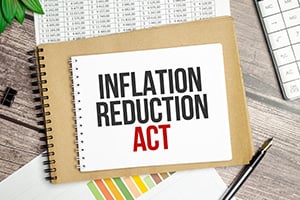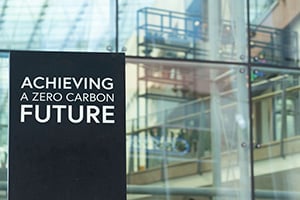
EPA keeps the list of the nation’s ENERGY STAR-certified buildings. These buildings maintain strict energy performance criteria and produce lower than average levels of greenhouse gases (GHG). Approximately twenty thousand buildings have achieved this certification in the United States, learn more by clicking here. Atlanta-headquartered Sustainable Investment Group (SIG) works with commercial clients throughout the United States and assists them in the achievement of Energy Star certification and maintenance.
Overview
Fifteen different kinds of commercial buildings may earn ENERGY STAR status, including retail outlets and stores, office buildings, and educational institutions and schools. Commercial buildings are responsible for approximately twenty percent of greenhouse gas emissions (GHGE). Historically, Los Angeles has boasted the largest number of certified buildings. These properties save the city hundreds of millions of dollars each year in energy bills. Washington, D.C., Atlanta, San Francisco, New York, Chicago, and Boston are also consistently counted among the nation’s top green cities. New York is particularly focused on improving and decreasing energy use patterns and GHGE. This plan is known as Local Law 84 (LL84) or “Greener, Greater Building Plan” (GGBP, 2009).
New York’s Plan for Change
GGBP is part of New York’s 2030 target plan. The goal of Local Law 84 Compliance is to decrease GHGs by five percent, a net savings of at least USD 7 bn. This plan also includes the creation of almost eighteen thousand construction jobs in order to accomplish the tasks associated with LL84.
Four regulatory parts of LL84 are supported by a finance entity and a job training program. The law requires: the city’s largest buildings to meet certain annual energy benchmarks; the implementation of a citywide energy audit (plus recommissioning each decade); and improvement of the lighting in nonresidential parts of the city by 2025.
The first benchmark report produced under LL84 was completed in 2011. The report focused on the city’s owned municipal buildings. The findings of the report were used to simultaneously guide and prioritize New York’s energy use and related retrofit projects for implementation.
Goals of LL84
New York’s plan to reduce GHGE by a stunning thirty percent by 2030 focuses on the needed improvement of energy efficiency in the city’s largest and already constructed buildings. According to EPA, approximately seventy-five percent of GHGE in New York City are derived from energy requirements of these buildings. This percentage is approximately twice that of other cities’ average energy consumption.
Almost half of New York’s GHGE are generated by the city’s largest buildings. These properties represent a mere two percent of all properties–but half the city’s built-space. Importantly, about eighty-five percent of all buildings that will exist in 2030 New York are already constructed.
Decreasing the energy consumption of these mammoth buildings creates a whopping prospective energy savings for New York. By improving GHGE, the city addresses approximately half of the total energy emissions problem.
Local Law 84 Compliance: LL84 Requirements
Local Law 84 Compliance requires all properties which are privately owned, with square footage of fifty thousand square feet or multiple buildings with combined surface of at least one hundred thousand square feet to both measure and report the energy and water usage for each year. This requirement is detailed in New York City Mayor’s Office of Long-Term Planning & Sustainability (2012). Sustainable Investment Group works with New York property owners and investors in achieving necessary sustainability and compliance.
The first benchmarking report which analyzed a year’s worth of energy and water usage was the first step necessary to increasing the knowledge of the city’s buildings. Benchmarks help owners to make required adjustments to save energy and improve energy efficiency but also save these individuals and businesses in total energy expenditures.
Energy Star Portfolio Manager
The U.S. Environmental Protection Agency (EPA) Portfolio Manager is one of the sophisticated tools in use to track energy and water use— about one billion, eight hundred million square feet of benchmarked built-space. Collected data is helping the city and property owners to create new efficiencies and opportunities for energy and financial savings.
Property and Energy Analysis
The study and analysis of New York’s buildings provides an outstanding opportunity to simultaneously improve energy efficiency and performance. According to New York’s comprehensive sustainability plan, (PlaNYC) the activities of benchmarking and analyzing energy consumption and GHGE from the buildings is a core element of New York’s plan to reach energy reduction and emissions goals by 2030.
According to these benchmarking data, energy usage dramatically differs between the types of properties, locations, and their usage. For instance, some properties use an amazing three to five hundred percent more than other buildings with similar uses in the city. And, although many other factors and variables must be considered, newer buildings on average in New York consume more energy than the older structures.
Conclusion
New York City is one of the world’s greatest and most productive cities. However, environmental issues such as energy usage and emissions are a reminder of the city’s environmental delicacy. Building a city towards the sky, accommodating millions of residents, workers, and tourists each day, and limited resources makes addressing energy use and efficiency as crucial component of New York’s robust growth and continuity plans.
Existing data underscores the facts. New York’s newer construction is also desperately in need of energy efficiency improvements. Local Law 84 makes measurement and relay of energy and water usage a requirement for most of the city’s large buildings. Required data is likely to increase over time as New York grapples with rising population and fuel prices.
Sustainable Investment Group has the tools and experience to assist property owners and investors in achieving legal compliance. This expertise will save owners money in fuel costs. However, some property owners want the peace of mind that comes with doing everything possible to save energy and reduce GHGE. As citizens of New York, the nation, and the world, these owners or investors want to know they’re doing everything possible to do their part in maintaining the health of our world.



